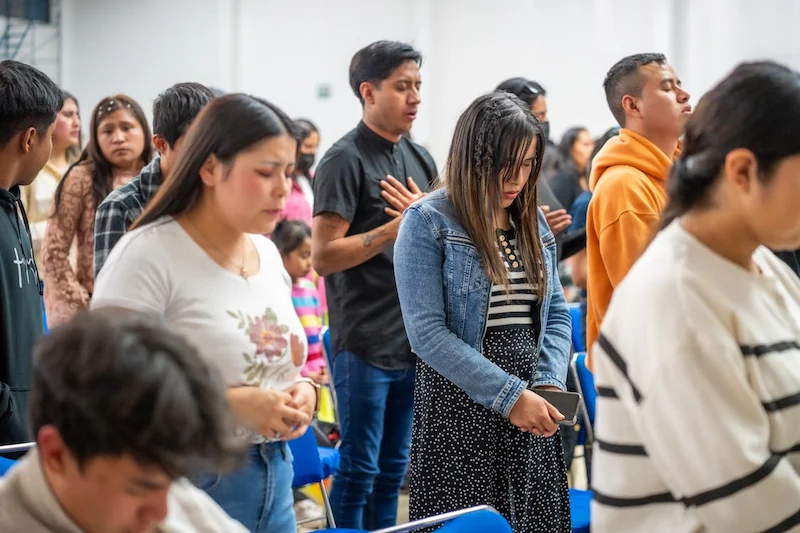Table of Contents
In today’s digital age, technology has become a vital tool in connecting communities, sharing messages, and fostering relationships. Churches, as community-centric institutions, can benefit greatly from embracing technology to engage with their congregation and attract new members. Whether it’s through social media, live streaming, or digital outreach strategies, integrating tech can help your church thrive in a fast-evolving world. In this blog, we’ll explore the top benefits of using technology to grow your church community and share practical ways to get started.
Get More Visitors with Digital Outreach
One of the biggest challenges for any church is attracting new visitors. With the help of technology, you can expand your reach beyond physical boundaries and engage with people who may not have discovered your church otherwise. Tools like social media advertising, email marketing, and local search engine optimization (SEO) make it easier to share your church’s mission and events with a wider audience. For example, creating targeted campaigns on platforms like Facebook or Instagram can help you reach residents interested in faith-based events. Additionally, having a mobile-friendly church website with clear service times, directions, and an “About Us” section makes your church more approachable to first-time visitors. You can also learn more here about how to get more visitors using expert help. This can ensure that your church’s digital strategy is effective and aligned with its goals.
Strengthen Relationships Through Social Media Engagement
Social media platforms like Facebook, Instagram, and Twitter are powerful tools for fostering a sense of community and connection. They allow churches to communicate with their congregation in real time, share updates, and post inspirational messages. Regularly posting sermon highlights, event photos, and testimonials can help members feel more engaged and connected even when they’re not physically present.
Moreover, social media offers a space for meaningful interactions. You can host Q&A sessions, share prayer requests, or organize virtual Bible studies. The comment sections of posts often become a hub for congregation members to connect, building stronger relationships within your church family.
Expand Accessibility with Live Streaming
For members who cannot attend services in person, live streaming provides an invaluable way to stay connected to the church. Platforms like YouTube, Facebook Live, and Zoom make it simple to broadcast sermons, worship sessions, and other church events to a remote audience.
Live streaming not only helps you retain your current members but also opens the door for new people to explore your church from the comfort of their homes. It’s especially beneficial for elderly members, people with disabilities, or those who are traveling. By providing this option, you demonstrate inclusivity and show your commitment to meeting people where they are.
To maximize the impact of live streaming, consider investing in good audio-visual equipment and creating a dedicated team to manage your broadcasts. Adding features like subtitles and downloadable sermon notes can also enhance the viewer experience.
Foster Community Through Online Groups

Technology can help your church grow deeper connections by facilitating small groups and discussions online. Platforms like WhatsApp, Slack, or Facebook Groups can be used to organize prayer groups, Bible study sessions, or support networks. These virtual spaces create opportunities for members to connect, share their thoughts, and support each other throughout the week—not just on Sundays.
For example, a young adults’ group could host weekly Zoom meetings to discuss faith-related topics, while parents might find value in a support group for Christian parenting. These online groups make it easy for people to form bonds and feel a deeper sense of belonging, even if their schedules or location prevent them from attending in-person gatherings.
Streamline Administrative Tasks with Church Management Software
Church management software (ChMS) simplifies the day-to-day operations of running a church, allowing you to focus more on ministry and less on logistics. Tools like Planning Center, Breeze, or Tithe.ly can help with tasks such as managing member databases, tracking donations, scheduling events, and sending communications.
With ChMS, your church can create a seamless experience for members. For example, online giving platforms allow people to tithe or donate directly through your website or app. Automated email reminders can notify members of upcoming events or volunteer opportunities, while digital calendars ensure everyone is on the same page.
By streamlining administrative tasks, technology frees up more time for church leaders to focus on what truly matters: building relationships and fostering spiritual growth within the congregation.
As you take steps to modernize your church, remember that the ultimate goal is to enhance relationships, deepen faith, and share your mission with as many people as possible. With the right approach, technology can become a powerful ally in achieving those goals and growing your church community.
Want to explore something different? Tips for Getting a Loan Approved for Your Small Business

